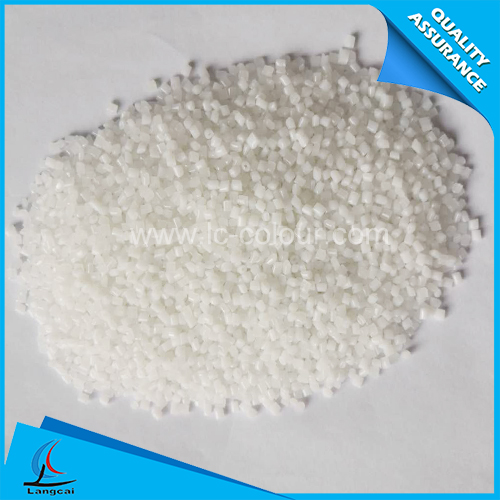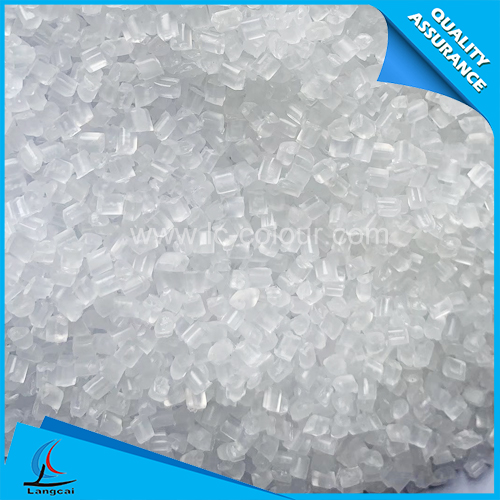- Nonwoven Fabrics
- Tailor Made Masterbatch
- Plastic Masterbatch
- Chemical Fiber Masterbatch
- Functional Masterbatch
- Machinery
- Spunbond PP Nonwoven Masterbatch
- Mono Color Masterbatch
- Liquid Color Masterbatch
- Non-woven Masterbatch
- Polyester Fiber Masterbatch
- Nylon Fiber Masterbatch
- Polypropylene Fiber Masterbatch
- Lab Nonwoven Machine
- Lab BCF Machine
- Dryer
- Filler Masterbatch
- The 2025 International Textile Innovation Conference will be held in Keqiao, Shaoxing on November 5th
- Unveiling the core components of Mono Color Masterbatches!
- Why choose Mono Color Masterbatches? The four core advantages are irreplaceable
- The adjustment of the global industrial chain has forced the upgrading of the risk prevention and control model
- What is a Complex masterbatch? What are the outstanding advantages?
- With weak US cotton and increased domestic supply, can the upward trend continue in the future?
- Phone:00836 - +86-535-8484358
- Email:wendy@ytlc-colour.com
- Address:DALAN INDUSTRIAL PARK, ZHANGXING TOWN, ZHAOYUAN CITY, SHANDONG, CHINA
When "Xinjiang Cotton" suffered unfair treatment, what were the facts? What is the status of "Xinjiang Cotton" in the global cotton and textile market? Under the background that the epidemic is still spreading globally, what is the current development situation of the domestic and foreign textile and cotton markets? In the process of further enhancing the international competitiveness of my country's cotton industry and cotton-related industries, what value does the financial market play?
From June 17th to 18th, the "2021 China International Cotton Conference" with the theme of "creating an open, inclusive and sustainable world cotton industry" was held in Suzhou, Jiangsu. The conference was hosted by the China Cotton Association and the National Cotton Exchange, and co-organized by Zhengzhou Commodity Exchange. Nearly 800 representatives from relevant government departments, industry organizations, cotton-related industry chain enterprises and brand owners gathered together to conduct in-depth discussions on the above hot issues.
The overall international market
The demand for cotton products in my country is still strong
As the basic raw material of the textile industry, cotton has always closely affected the "nerves" of the textile industry. my country is currently the world's largest cotton consumer and the second largest cotton producer.
Li Zhaohu, president of Huazhong Agricultural University, pointed out that my country’s cotton production reached 5.91 million tons in 2020, an increase of more than 12 times over 1949 and an increase of 1.2 times over 1980. However, in recent years, the average annual growth rate of my country's cotton output has gradually slowed down. Since 2010, my country's annual cotton output has basically stabilized at about 6 million tons.
Wang Jianhong, deputy director of the All-China Federation of Supply and Marketing Cooperative Agricultural Materials and Cotton and Linen Bureau, and vice chairman and secretary-general of the China Cotton Association, said that in 2007, my country’s cotton production reached the highest of 7.5971 million tons. In terms of unit yield, in 2001, my country’s cotton yield per mu was 73.8 kg/mu. In 2020, the yield has increased to 124.3 kg/mu, an increase of 68.5% in 20 years.
"Xinjiang Cotton" is the "star product" of my country's cotton. Wang Jianhong pointed out that Xinjiang's cotton production has been at the forefront of the country. In 2020, Xinjiang’s cotton planting area has accounted for 78.9% of the country’s total cotton planting area, and its yield has reached 137.5 kg/mu. In 2001, Xinjiang’s cotton yield was 86 kg/mu.
"From the perspective of quality, Xinjiang long-staple cotton is synonymous with high-quality cotton." said a person in charge of a spinning enterprise.
However, since 2020, the epidemic has spread globally, Sino-US economic and trade frictions have intensified, and the "Xinjiang Cotton" incident has occurred. Multiple factors have superimposed on the development of my country's cotton and textile markets.
Zhang Xian, vice chairman of the China Chamber of Commerce for Import and Export of Textiles, pointed out: "The impact of Sino-US economic and trade frictions and the'Xinjiang cotton' incident has made US buyers speed up the transfer of textile orders from China. This is an indisputable fact."
According to the statistics of the US Department of Commerce, in 2020, US imports of textile and apparel products from China have dropped by 31%. Among them, US imports of cotton clothing from China have dropped by nearly 40%.
According to data from the China Chamber of Commerce for Import and Export of Textiles, in the first four months of this year, although China’s exports of cotton garments to the United States increased by 60% year-on-year, compared with 2019, it still fell by 9.4 percentage points. The recovery of products is significantly lower than that of non-cotton products.
"This is mainly due to the intensified impact on the export situation since the'Xinjiang cotton' incident was fermented. We must note that the implementation of the ban on the import of cotton products in Xinjiang by the U.S. government has continued to tighten, which has caused international clothing brands and purchasers to impose an impact on my country. At the same time, a group of export-oriented enterprises and contract processing enterprises in my country have also adopted various measures to prevent and reduce risks, which has led to frequent rejections and abandonment of orders." Zhang Xian said.
However, it is worth noting that from the perspective of the overall export market situation of my country's cotton textiles, the first four months of this year are still improving.
Data from the China Chamber of Commerce for Import and Export of Textiles shows that from January to April this year, my country’s cotton textile and apparel exports reached US$19.7 billion, a year-on-year increase of 44%, 11 percentage points higher than the growth rate of my country’s total textile and apparel exports during the same period. Specifically, from January to April, my country's cotton garment exports reached 14.2 billion U.S. dollars, an increase of 46% year-on-year; cotton exports were 3.9 billion U.S. dollars, an increase of 39% year-on-year; cotton yarn exports were 420 million U.S. dollars, an increase of 8.2 %.
"This shows that despite the impact of the'Xinjiang Cotton' incident, the overall demand for my country's cotton products in the international market is still strong." Zhang Xian said.
Gao Fang, President of the China Cotton Association, analyzed and pointed out: "In 2020, the global epidemic will burst, the anti-globalization surge, the stalemate and disagreement in the political and economic fields, will bring many risks and challenges to the global cotton industry and textile industry. In the face of the epidemic, With the effective deployment and policy support of the Chinese government, my country’s cotton and textile enterprises have actively resumed work and production, the upstream and downstream of the industrial chain have strengthened collaboration, and market confidence has gradually recovered."
Ye Jianchun, chief engineer of the China Cotton Textile Industry Association, also said: “Since August and September last year, domestic cotton spinning enterprises’ orders and production operations have gradually improved, especially in terms of profit. From January to April this year, Chinese textile enterprises The overall development situation is good, especially the operating situation of pure cotton yarn enterprises is relatively optimistic, which can be said to be the best stage of development in recent years. In the first half of this year, the good operation of pure cotton yarn has brought about the overall operating benefits of the cotton spinning industry. Great improvement."
Chen Minghong, deputy general manager of China National Textile and Apparel Group Co., Ltd., said: "China's cotton spinning industry chain has basically recovered from the second half of last year to its pre-epidemic situation, and domestic and foreign cotton prices have returned to historical median levels. China's cotton consumption has experienced a certain decline last year. , Resulting in a certain amount of accumulated inventory. Since the beginning of this year, the accumulated inventory has increased significantly year-on-year. It is expected that the inventory will remain destocked in the next year. However, it is worth noting that the epidemic has brought an unexpected surprise, especially for the spinning mills, which are almost full "Blood resurrection". At present, China's higher cotton yarn processing profit has lasted for two or three quarters, which is unprecedented in recent years. This also shows that China's cotton-related industrial chain is healthy, complete, and resilient. Various signs All show that the opportunity is for the'prepared' Chinese cotton and cotton textile industry."
"The development of China’s cotton and textile industries has benefited from opening up, and countries around the world have also benefited from it. In the next step, the global cotton industry must'open and inclusive, and create a win-win future for the cotton industry.' Talking about the next step in the global cotton industry Development, Gao Fang emphasized, “We respect the development patterns, characteristics and laws of the cotton industry in other countries. Similarly, the Chinese cotton industry, which has made great contributions to the prosperity of the world’s textile and apparel industry, should also be treated fairly and respected as it deserves. At the same time, everyone must respect nature and follow the sustainable development path of the cotton industry. "
Wang Wei, member of the Party Group and Deputy Director of the All-China Federation of Supply and Marketing Cooperatives, also said: “Since last year, some Western countries have fabricated facts to interfere and destroy the international supply chain of the cotton industry and the textile and apparel industry, and damage the vast majority of Xinjiang cotton farmers and the world. Consumers’ interests. When the world economy is undergoing profound adjustments and changes, only openness can enable different countries to benefit from each other, prosper together, and develop lastingly. This is a wise choice that all countries should make. We must jointly safeguard freedom, openness, and non-discrimination. To avoid the politicization of economic and trade issues, and to better promote the liberalization and facilitation of trade and investment in cotton and cotton products."
- Unveiling the core components of Mono Color Masterbatches!
- The 2025 International Textile Innovation Conference will be held in Keqiao, Shaoxing on N
- Why choose Mono Color Masterbatches? The four core advantages are irreplaceable
- The adjustment of the global industrial chain has forced the upgrading of the risk prevent
- What is a Complex masterbatch? What are the outstanding advantages?
- With weak US cotton and increased domestic supply, can the upward trend continue in the fu
- Yantai Liangcai Plastic Technology Co., Ltd. specializes in the production of Monochromati
- The predicament of Sino-US trade and exchange rate fluctuations
- Yantai Liangcai empowers the new future of fiber colors with high-quality polyester fiber
- What impact will the implementation of the Federal Reserve's interest rate cut have on the


